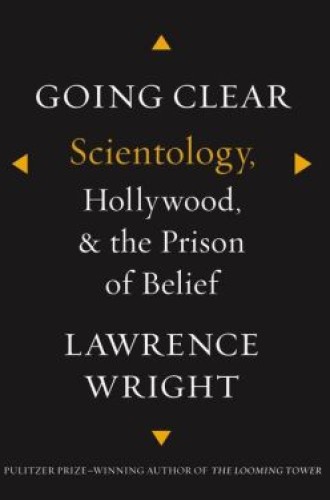Going Clear, by Lawrence Wright
I’m sure it’s only a coincidence, but nearly every time I’ve shoehorned a brief lecture on Scientology into my survey of religion in North America course—brief because I’m not at all sure it merits being classified as a religion—I’ve received a phone call or e-mail from some Scientology entity or another offering to send a representative or materials so my students will be properly informed. The last time, I received a large box of CDs and DVDs of what appeared to be every lecture L. Ron Hubbard ever gave. My colleagues received boxes as well.
All of that is to say that I cannot imagine the volume of materials Lawrence Wright sifted through to write Going Clear. He clearly needed to be a brave researcher and a gifted writer to understand and explain such recondite notions as thetans and the infamous Sea Org, much less to reconcile Scientology’s claim that it adds 4.4 million new members every year with independent estimates that peg the number of Scientologists in the United States at 25,000.
The story of Scientology begins, of course, with Lafayette Ronald Hubbard, the native of Tilden, Nebraska, who created the movement. Wright preemptively dismisses attempts to dismiss Hubbard, arguing “that to label him a pure fraud is to ignore the complex, charming, delusional, and visionary features of his character that made him so compelling to the many thousands who followed him and the millions who read his work.” Hubbard fancied himself an adventurer and traveled widely; a long-ago acquaintance of his said that Hubbard “possessed the ego and talents” to “develop his own private religion.” One of Hubbard’s ex-lovers remarked, “He said he always wanted to found a religion like Moses or Jesus.”






